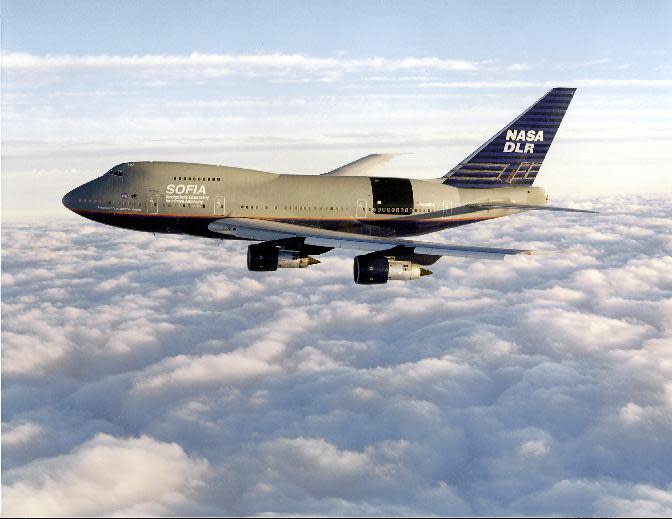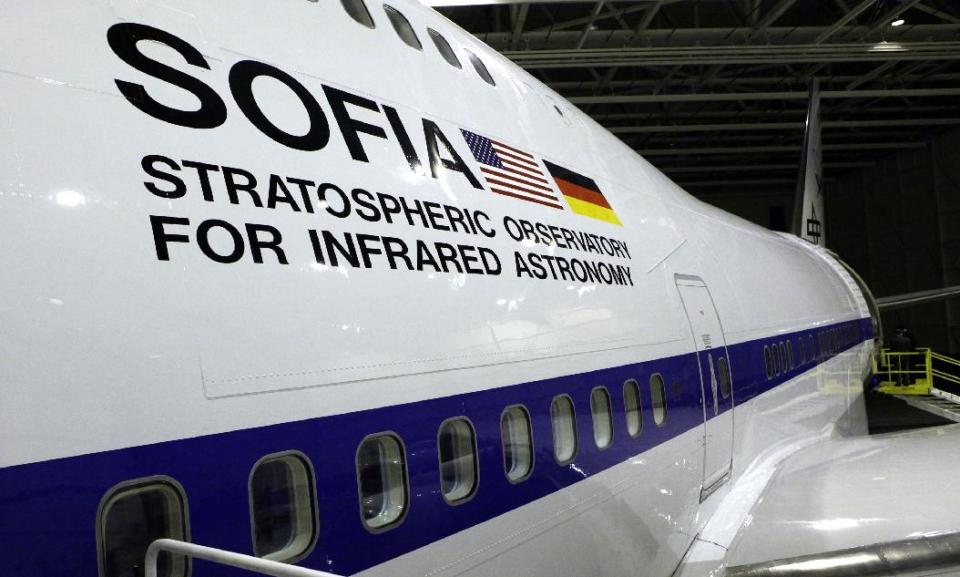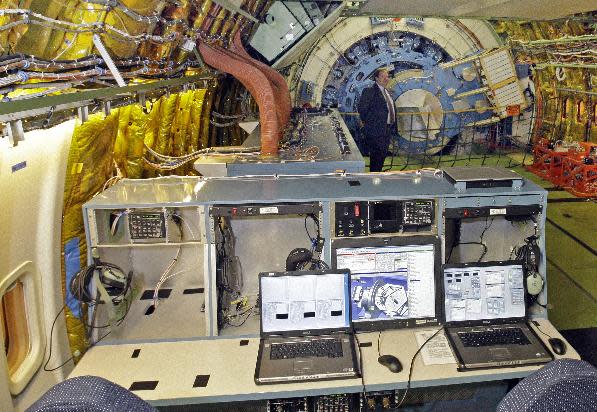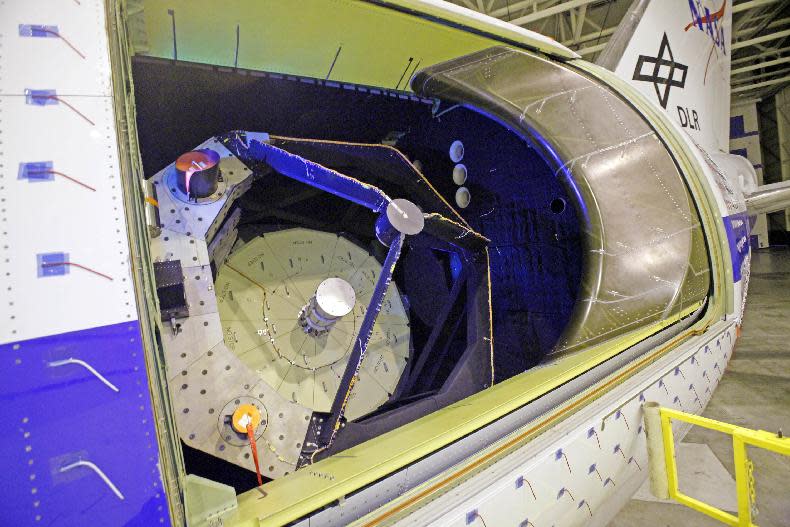Funding for US-German airborne observatory cut
PALMDALE, Calif. (AP) — NASA plans to mothball its infrared airborne observatory unless it can get some financial help from international partners.
President Barack Obama's proposed budget for fiscal 2015 released Tuesday slashes funding for the U.S.-German project from $84 million to $12 million.
"Budgets are about making choices," said NASA Administrator Charles Bolden.
NASA is the main backer of the Stratospheric Observatory for Infrared Astronomy, or SOFIA for short, which scans the skies for celestial objects that give off radiation in infrared wavelengths that are not visible to the human eye.
The high-flying observatory, which cost about $1.25 billion to develop, has a history of delays and cost overruns. It made its first observations in 2010 and reached full operational capability last month.
The two NASA centers in charge of the project, NASA Armstrong Flight Research Center in Southern California and Ames Research Center in Northern California, learned about the proposed cut last week.
"It was a surprise to all of us," said David McBride, head of NASA Armstrong, formerly known as the Dryden Flight Research Center.
SOFIA consists of a 40,000-pound telescope that's mounted in the rear of a modified jumbo jet. During flight, a hatch opens to allow the 100-inch diameter telescope to see its targets.
Flying between 39,000 feet and 45,000 feet, SOFIA has an advantage over ground-based telescopes because it doesn't have to peer through the water vapor in the atmosphere.
NASA previously said SOFIA was expected to last at least 20 years. The observatory will continue flying through September. If there's no extra funding, then the space agency will have to put it in storage.
If it comes to that, "we lose a lot of momentum," McBride said.
Pete Worden, NASA Ames director, said he will fly to Germany in several weeks and plans to find a way to continue the mission.




